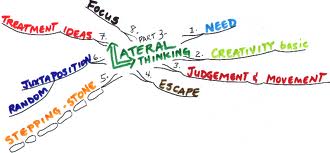by Charles Plant | Feb 4, 2013 | Literature Review
 There’s a great interview of Seth Godin on Copyblogger. Worth a read, I’m still laughing from reading it.
There’s a great interview of Seth Godin on Copyblogger. Worth a read, I’m still laughing from reading it.
The best line was when Seth was asked whether he writes every day. His response: “Do you talk every day?”
As all of you know, I’m trying out this writing thing (having read prodigiously all my life) and am really enjoying it. I write fast and as you know, not well, but I’m learning and hopefully I’ll figure it out some day.
Meanwhile, I have been writing like a madman for 18 months now and frequently end up sending somebody something that they just don’t read. I mean they don’t even get far enough to get turned off by my turgid and dense prose.
I’ve run into this problem before and used to be dismayed by the fact that many people don’t seem to like reading. Seth’s pairing of reading with talking made me realize that I shouldn’t be so upset. Lots of people don’t like listening either.
Whatever.
by Charles Plant | Feb 1, 2013 | Innovation
 So Blackberry finally released their new phone this week. I happen to use a Blackberry but only because I like the buttons. I have tried typing emails on touch screen based smart phones but my inaccurately big fingers seem to mess everything up so I am relegated to an older ‘not-so-bright’ phone.
So Blackberry finally released their new phone this week. I happen to use a Blackberry but only because I like the buttons. I have tried typing emails on touch screen based smart phones but my inaccurately big fingers seem to mess everything up so I am relegated to an older ‘not-so-bright’ phone.
The new Blackberry made me look at what they released and question what type of innovation this represents. Experts (of which I am not) typically classify innovation as one of the following types:
- Sustaining innovations are small enhancements that companies need to issue just to stay in the game.
- Breakout innovations significantly up the level of play within an existing category.
- Disruptive innovations are what we usually think of when we think innovation. These disrupt the current market behaviour by making existing solutions obsolete or transforming value propositions.
RIM’s original Blackberry was a disruptive innovation. No question of that. Apple’s iPhone is probably best seen as a breakout innovation. It upped the level of play but it didn’t establish an entirely new category. (I’m sure you could debate this but if you look closely at how Apple innovates, it typically develops Breakout Innovations like the Mac and the iPod but once in a while disrupts the market with something like an iPad.) Android based phones were probably a Breakout innovation, certainly not Disruptive but in some ways they could be classed as Sustaining as their appeal might be primarily based on price.
The new Blackberry I think is merely a Sustaining innovation. I don’t think it offers anything that is materially new and the key word here is Materially. Easier application switching, blink-less photos, faster loading times? Big Whoop.
It will be interesting to see how this plays out in the market.
February is here, summer can’t be far behind. Have a good weekend.
by Charles Plant | Jan 31, 2013 | Innovation
 Yesterday, I posed the question: “A woman had two sons who were born on the same hour of the same day of the same year. But they were not twins. How could this be so?”
Yesterday, I posed the question: “A woman had two sons who were born on the same hour of the same day of the same year. But they were not twins. How could this be so?”
I had a few people chime in with an answer but no one got it right the first time. The correct answer is that they weren’t twins but were part of a set of triplets.
Now of course, in life there is no one right answer and I had one very agitated reader who was convinced that her answer was correct and in retrospect it was, so there were two right answers. Her answer: That they were adopted but happened to be born at the same time on the same day, in the same year. Thanks Mom, you’re right.
It was interesting to see how people tried to answer the riddle as it showed a little about how they innovate. Each of you have your own way of meeting creative challenges and each of you uses a slightly different style to solve problems.
- Visioners: Those who envision the ideal future. These people leap to a completely new way of doing something.
- Modifiers: People who refine and optimize what has come before. This is the process of incremental adaptation.
- Explorers: Individuals who discover new and novel possibilities. This is done by applying a solution for one thing to a radically different problem.
- Experimenters: To combine and test many unique combinations. These people try out multiple options.
Which type of innovator are you?
by Charles Plant | Jan 30, 2013 | Innovation
 One of my favourite stories is about slow elevators. As it is told, there was a co-op building in New York where tenants were complaining about slow elevators. Management considered all sorts of solutions including installing additional elevators or speeding up the existing ones until one day someone came up with the idea of putting mirrors beside the elevators so people would have something to do when waiting and then wouldn’t notice the slow service. Great lateral thinking.
One of my favourite stories is about slow elevators. As it is told, there was a co-op building in New York where tenants were complaining about slow elevators. Management considered all sorts of solutions including installing additional elevators or speeding up the existing ones until one day someone came up with the idea of putting mirrors beside the elevators so people would have something to do when waiting and then wouldn’t notice the slow service. Great lateral thinking.
Lateral thinking as defined by Wikipedia is “solving problems through an indirect and creative approach, using reasoning that is not immediately obvious and involving ideas that may not be obtainable by using only traditional step-by-step logic. The term was coined in 1967 by Edward de Bono.”
One of the best ways to innovate is using lateral thinking, so in order to get your innovative juices flowing I want you to solve the following puzzle. I’ll post the answer tomorrow in a reply to the blog in case you don’t get it.
Solve This
A woman had two sons who were born on the same hour of the same day of the same year. But they were not twins. How could this be so?
by Charles Plant | Jan 28, 2013 | Emotional Intelligence
 “There is a great article in the McKinsey Quarterly on cheerfulness. (You may have to register with them to see the article but it is worth it.)
“There is a great article in the McKinsey Quarterly on cheerfulness. (You may have to register with them to see the article but it is worth it.)
They have done studies using Britain’s Royal Navy (of all places) on the effect that cheerfulness has on employees. ” … naval training is predicated on the notion that when two groups with equal resources attempt the same thing, the successful group will be the one whose leaders better understand how to use the softer skills to maintain effort and motivate. For officers leading small teams in constrained quarters, there’s no substitute for cheerfulness and effective storytelling.”
“No one follows a pessimist, and cheerfulness is a choice. It has long been understood to influence happiness at work and therefore productivity. The cheerful leader in any environment broadcasts confidence and capability, and the Royal Navy instinctively understands this. It is the captain, invariably, who sets the mood of a vessel; a gloomy captain means a gloomy ship. And mood travels fast.”
 There’s a great interview of Seth Godin on Copyblogger. Worth a read, I’m still laughing from reading it.
There’s a great interview of Seth Godin on Copyblogger. Worth a read, I’m still laughing from reading it.



